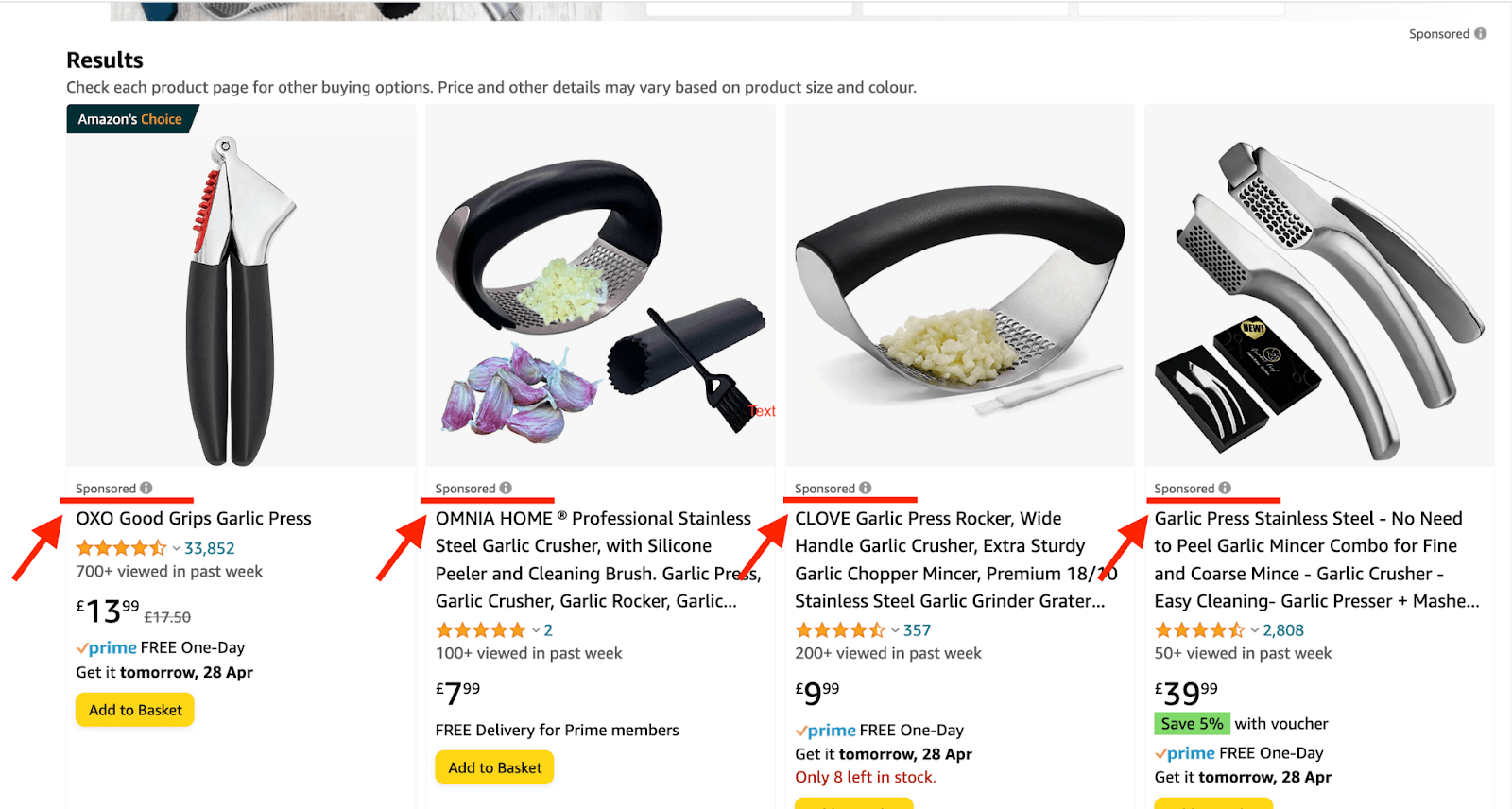Starting an FBA business can be a great way to generate a very healthy income online.
Leveraging Amazon’s platform and reaching millions of potential customers, gives sellers the opportunity and infrastructure to grow a big business quickly and efficiently.
But, as with all business models, FBA doesn’t come without issues.
This post will highlight 5 problems that Amazon sellers face, and how to deal with them to keep their business running like a well-oiled machine.
Adopting A Problem-Solving Mindset
“The problem isn’t the problem. The problem is your attitude about the problem.” – Captain Jack Sparrow.
Problem-solving is a huge part of running any successful business. FBA sellers need to be able to diagnose issues quickly and come up with creative solutions.
Whether it’s dealing with customer complaints, inventory shortages, or product returns, approaching each issue with a positive mindset and willingness to figure out a way to work around the problem is vital to the success of a business.
The point to remember when facing issues with an Amazon FBA business is that your competitors are likely facing the same problems too. So the better you become at resolving these issues, the more of an advantage you will have over your competitors.
5 Problems Amazon Sellers Face And How To Deal With Them
1. Cashflow

It’s common for Amazon sellers to face cashflow problems early on in their business.
The reason cash flow problems occur is usually that sellers don’t have access to/ or allow enough working capital to replenish their stock BEFORE it needs to be replenished.
The average lead time from placing a deposit down on an inventory order, to actually checking products into the Amazon FBA centers is around 60-70 days if travelling by sea (The most cost-effective way to move inventory).
So with this in mind, sellers need to be placing their second deposit down with their manufacturers as soon as their first shipment lands with Amazon FBA in order to keep stock replenished, keep sales coming in, and maintain product listing ranking.
How To Deal With Cashflow Problems In Your Amazon Business
There are a few options that sellers have to avoid having cash flow issues.
- Find products that are cheaper to produce therefore spreading startup funds over two orders of inventory.
- Negotiate better payment terms with your manufacturer (Usually, suppliers ask for a 30% deposit, with the following 70% to be paid when the shipment has landed)
- Apply for a business loan to get access to more cash.
- Amazon Lending Loan – Amazon helps sellers to finance their startup, which gets paid back from the sellers’ revenue. To gain access to Amazon Lending, you need to already be selling on Amazon.
2. Competition

The competition when selling on Amazon can be fierce.
There are more than 8 Million global sellers on Amazon, which is why it’s essential to have a competitive edge over other sellers in the same product category.
Product saturation can sometimes be an issue, especially if you are selling a commodity product.
How To Deal With Competition On Amazon
The best way to deal with competition on Amazon is to gain an advantage over them through the use of strategies like:
- Pricing Strategy – Use Amazon Repricer tools to stay ahead of the competition. Amazon Repricers automate Amazon repricing to make sure you are always on top of the rival sellers.
- Product Differentiation – Make sure your product stands out from others by providing unique features or benefits.
- Look for early upward trends and get there first.
- Optimizing Product Listings – Make sure all relevant keywords are included in your listings, as well as attractive visuals that draw customers’ attention and win the click.
- Invest In Intellectual Property – patents and trademarks will help you to have exclusive rights to sell products, giving you the potential to make higher profits, or restrict other sellers from selling your product altogether.
3. Price Wars

Amazon sellers can get into price wars which could potentially harm the profits of everyone involved.
Price wars on Amazon are a result of sellers trying to undercut each other in order to win a sale.
This can lead to profits being wiped out, as the discounting of prices affects the ability of sellers to make a reasonable profit margin.
How To Deal With Price Wars On Amazon
The best way to avoid getting into price wars is by setting your pricing strategies with an Amazon Repricer tool.
Repricer will monitor competitor prices and automatically adjust yours to make sure you are always competitive.
The tool will price upwards when the competitive environment allows, such as when competitors go out of stock and the competition decreases. It also works when your competitors increase their prices.
It’s an awesome way to remain competitive on price without having to constantly worry about it as the tool runs on automation.
4. Getting Customers To Leave Reviews

Since the new rollout of the Amazon A10 Algorithm, Seller authority has become one of the most important ranking factors, which means the acquisition of positive reviews matters even more than it did with A9.
Basically, the more positive reviews you can receive from verified customers on your product listings, the higher your product listing will rank on page 1.
Since 2016, Amazon made it more difficult to reach out to customers and ask them to leave a positive review because sellers were heavily incentivizing and influencing the reviews with free product giveaways and other incentives.
How To Get More Reviews on Amazon
- Send personalized follow-up emails – Use AI automated tools, like eDesk, to send follow-up emails to customers offering support with any potential issues, then ask for feedback and provide them with a link to the product page.
- Product Inserts – It’s against Amazon’s terms to directly ask the customer for a 5-star product rating on a product insert. Sellers can however ask for a review, so create an eye-pleasing insert to be placed into your product packaging for your customers to find.
- Family and friends – Providing family and friends with a discount code and a link to your product is still allowed. You are not allowed to ask them for a positive review in exchange, but considering the fact that your loved ones will always support you, a positive review is inevitable. (Just do not let them use the same wifi connection or IP address as yours to leave the review because Amazon has access to these details and will flag the activity as suspicious.)
5. Product Listing Not Ranking
Ranking a product listing high in the search terms is the ultimate goal of every seller.
However, some sellers struggle to gain any traction with organic rankings on Amazon, and it usually boils down to these common mistakes:
- A poorly written product listing
- Not generating enough sales
- The product is too competitive
Here’s how to deal with the 3 mistakes listed above:
Optimize A Poorly Written Product Listing On Amazon
A badly written product listing on Amazon will lack relevant keywords in the product title, bullet points, and product description.
It will also have poor images that customers won’t feel compelled to click on.
To optimize and rank your product listing on Amazon, it will have to satisfy the Amazon Algorithm.
There are 3 main pillars that the Amazon Algorithm considers when ranking products, and they are:
- Click-through rate (CTR)
- Conversion rate
- Product reviews.
The best scenario for an Amazon seller to satisfy the Amazon A10 Algorithm is this:
- The customer actively searches for the seller’s product via the main, root keyword. (the most obvious word(s) for the product.)
- The customer purchases the product right away without leaving the product listing.
- The customer then leaves a positive review of the product once they have received it.
How Do Sellers Encourage This Type Of Behaviour From Their Customers?
Create a highly optimized Amazon product listing –
- Make sure the product’s main keyword is at the very beginning of the product title.
- Include relevant long-tail keywords in the title after the main keyword.
- Be sure bullet points sell the product by highlighting the product’s benefits.
- Add all other relevant keywords to the product description.
- Use high-quality photographs for your product images with the main product image on a white background, and the secondary images should show the product in use.
How To Deal With A Lack Of Sales
When a product is first launched on Amazon, it is likely to start its journey a few pages back in the search terms, meaning customers are very unlikely to ever find it.
The best way to generate early sales is to run PPC ads on the Amazon platform. Paying to have your product show up at the top of the search terms will make your listing visible to customers who are searching for it.
They are labelled as ‘sponsored’ ads and they look like this:

For this example, I search for the keyword “Garlic Press”.
If I were to click on one of the sponsored listings and purchase the item, that product listing would then gain sales rank and likely climb the rankings for the keyword “Garlic Press”.
How To Deal With A Highly Competitive Product That Won’t Sell
Unless you are an ‘Amazon-seller-seasoned-pro’ and have well and truly mastered the art of running PPC ads, I would generally steer clear of products that are in a highly competitive category.
If you have already invested in a product that is competitive and is struggling to sell, I would recommend:
- Optimizing the product listing to the best it can possibly be, and running PPC ads to compete with organically ranked listings.
- Invest in an FBA Course to fine-tune your skills and gain access to the best advice.
- Run PPC ads to offload inventory and start over with a less competitive product, even if you break even.
- Drastically drop the price to break even
It’s really important to perform market research prior to investing in a product to make sure that there is enough demand to sell the required amount of units to reach your income goals. But also, to determine whether or not the product is too competitive and you will struggle to compete.
Conclusion
Although Amazon FBA can be a great way to make money online, it is important to take into account the various issues that may arise and how to best address them.
When facing problems in any business, you will gain knowledge and experience and will over time be able to address such issues more effectively.
Guest Post by Craig Adam, an ex-construction worker turned multiple 6 figure eCommerce seller. Founder of craig-adam.com writing about eCommerce, Amazon FBA, Entrepreneurship, and Torfx.


